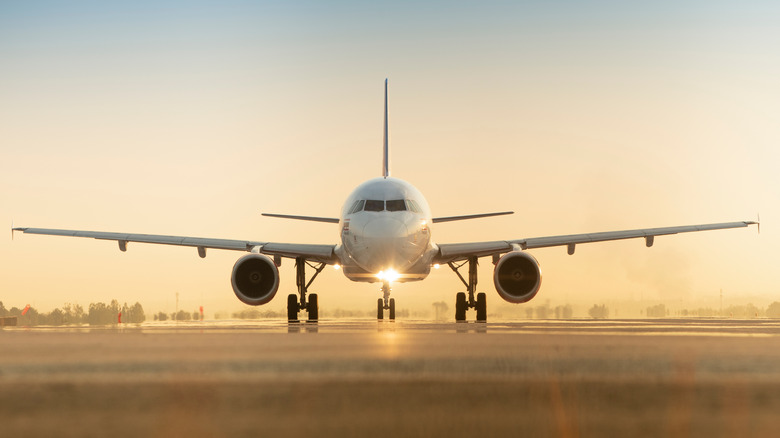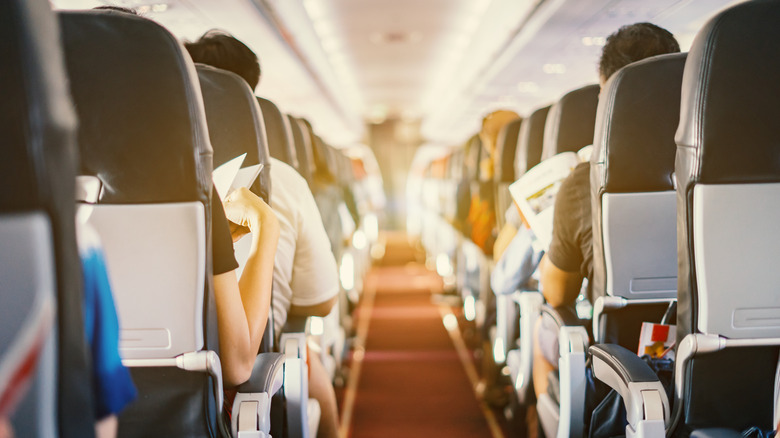How Flying Can Increase Your Risk For Blood Clots
Our blood is naturally able to stop flowing continuously in the case of an injury by forming a clot that prevents blood from escaping where it shouldn't, whether it's inside or outside the body, as per WebMD. The ability for our blood to clot can also be problematic if it does so in unnecessary situations, which can lead to life-threatening conditions, such as a stroke or heart attack. A blood clot forms from specific large cells known as platelets, which are designed to stick to one another and to potential openings in the blood vessel walls. They clot together until a seal is formed.
Unfortunately, blood clots can also form when blood flow has been compromised, such as in the case of sitting in the same position on an airplane for hours on end, as explained by Healthline. Specifically, on trips lasting longer than four hours, the lack of proper blood circulation can give rise to clots that, in turn, lead to serious medical complications, including pulmonary embolism and deep vein thrombosis.
A pulmonary embolism occurs when the clots make their way through the circulatory system to the lungs and get lodged in one of the main arteries, blocking blood flow (per the Mayo Clinic). With deep vein thrombosis, the clots usually form and stay in the legs, where they cause swelling and pain (via the Mayo Clinic). The good news is that there are ways to prevent and minimize your risk of developing blood clots when flying.
How to avoid blood clots when flying
In order to know how to prevent blood clots when flying, it's important to understand your level of risk, as per the University of Columbia's Surgery Department. Those who have a history of blood clots are at greater risk of developing clots while in the air. If this is the case for you, it may be necessary to discuss the situation ahead of time with your doctor to see if a temporary course of anticoagulation medication is in order.
Another risk factor for developing clots while flying is obesity. In a 2011 study, researchers looked at the link between obesity and blood clots, finding that the taller and more overweight the participants were, the more likely they were to develop blood clots. Regardless, they never arrived at a definitive reason as to how inflammation is associated with obesity coupled with the increased need for blood circulation contributed to the findings.
Across the board, everyone can take steps to minimize their risk of developing blood clots while flying (via the University of Columbia's Surgery Department). If possible, try to regularly get up to stretch and walk down the aisle, while also ensuring that you wiggle your legs and feet while seated. It's also essential to stay hydrated in order to increase blood flow. If you do notice any symptoms of a blood clot in the days following your flight, make sure to seek out medical assistance immediately.


